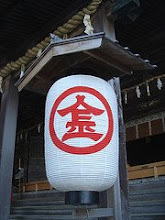10/40/200 Time Period Weighted Moving Average
The Moving average is buy far one of the most useful and popular technical indicators.
The WMA Weighted Moving Average uses past price performance as a predictive tool for future price movement .
To use this tool properly, it is important to understand and be aware of the chart time frame you're viewing.
The moving average calculates the past 10, 40, 200 time periods and generates a line on the chart. If you're on a daily chart the 40 ma will be a line representing the past 40 (days).
If you're on a 15 minute chart the 40 ma will be a line representing the last 40 (15 minute time periods).
There are several ways to calculate moving averages
Simple Moving average.......is the basic moving average.
Exponential moving average...is a simple moving average with a deviation component used to smooth the line out.
Weighted moving average...is an exponential moving average where the most current time periods are weighted to be more relevant or significant.
Signficant Points:
1. Look at the Above chart......notice how the 10 wma follows the price closer than the 40 wma.
2. On the left side of the chart the 10 wma is well above the 40wma(this is a Bullish trend).
also notice the rising volume.
3. Then notice how the 10 wma begins to turn down toward the 40 wma and continues to cross over the 40 wma . Again notice the volume.
4. Once the 10 wma passes under the 40 wma the trend is then considered Bearish.(Sell Signal)
also notice the red volume selling spike the first time the 10 wma touched the 40 wma.
5. The 10 wma continued to move down to the 200 wma and bounced twice (double bottom).
Notice the long red sell candles as the price moves down. (indicates high volatility ).
Notice the 2 red sell volume spikes when the 10 wma first touches the wma 200.
Also notice the second bounce was not as low as the first. (first confirmation of a bottom)
6.Then 10 wma moved back up to and crossed over the 40 wma where the trend becomes bullish again. (Buy Signal)
Always....Always.....Always .....BE Aware of the time frame you are looking.
It is very important to remain in context with the prevailing trend and overall price movement.
The 10 wma and 40 wma are in months on the above chart.. but on a Daily chart the wma's would be the past (10) one hour periods or the past (40) 15 minute periods...
this the biggest mistake a new chart reader will make....The wma's are still relivent but only for the time frame of the specific chart time frame.....
Don't get in to a trap of looking at weekly chart and make your trading decisions based on the hourly chart.... or visa versa, they're two different worlds.
As you look at different chart time frames , you will notice the same kind of price movements
on a 30 minute intraday chart as with the weekly 5 year chart...
As a Swing or Day Trader,
I use the yearly,monthly and weekly charts for over all perspective.
I base all my buying and selling decisions on the intradaily- 30 minute and 5 minute charts.
I will use the 1 hour and 1 minute charts to gage the rhythm of cycles.
To keep my perspective, many times I'll print off and put up a 3 month and a 2 year chart while trading the intraday 30 minute chart.
It is easy to get so close to the bushes, you lose track of where the trees are.
If I make a decision to buy stock on the 30 minute chart, I will stay with the 30 minute chart until I make the decision to sell....Don't buy in on the 30 minute chart and then jump over to the 3 minute chart to decide when to sell.....Every time I tried it , I got confused and ended up losing money or getting out too early or too late.
Avoid The Wipe Out!
The market is indifferent to all.
As the moon is to the Ocean, so is the market to the trade.
The wise trader is indifferent to the trade.
As the tide is to a sand castle , each trade is as a straw dog.
Market sectors are as oceans, each with their own kind.
Rise and fall of a wave, as a clock in time.
Space between the waves are as sleeping volcano's.
Compressing down yet building up.
The Fifth Constant Market Trader Tao"Large waves require patience and commitment.
Neboxian
Medium waves expect endurance and strength.
Small waves demand attention and agility.
When searching for starfish in the tide waves, A wise trader always
knows where the big waves are."
Wednesday, September 19, 2007
Moving Average Stock Chart ...S$P 500
Posted by Neboxian at 7:54 PM
Labels: Beginners Only Classes 101
Subscribe to:
Post Comments (Atom)








1 comment:
Bravo, seems to me, is a magnificent phrase
Post a Comment